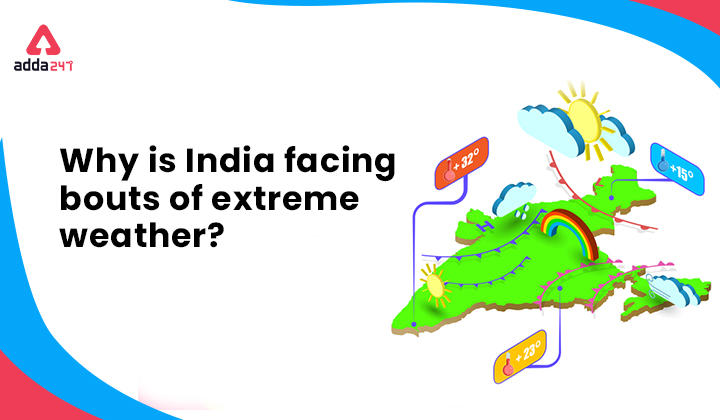Introduction:
Even as the southwest monsoon began to retreat from the subcontinent, Kerala, Uttarakhand and some other parts of the country received record rainfall in October. According to the India Meteorological Department (IMD), many parts of the country recorded an unusually high percentage of excess rainfall in September & October 2021.
Why such Uncertainty?
- There have been two rain-bearing ‘low-pressure systems’ that have been active in the Arabian Sea as well as the Bay of Bengal in the month of October.
- The low-pressure system in the Arabian Sea contributed to the heavy rain in Kerala.
- Whereas western disturbances, which are periodic influxes of moisture-laden clouds from the Mediterranean, and common during winter, are what caused the rain in northern India.
- The Bay of Bengal is still warm and strong winds from there are reaching as far as Uttarakhand and will contribute to rainfall in several parts of north-eastern India.
- October is the month when the southwest monsoon entirely retreats from India and the northeast monsoon sets in, bringing rain over Tamil Nadu, Puducherry, coastal Andhra Pradesh and Kerala.
Is it a new Pattern?
- In both these States(Kerala & Uttarakhand) and others, over the last few years, there have been variations in the pattern and intensity of rainfall.
- Kerala had seen a severe spell in 2018, which caused havoc. This year’s rain, too, claimed lives in Kerala and Uttarakhand.
Is it an effect of Global Warming?
- Both low pressures, as well as western disturbances, are tangentially connected to the larger pattern of global warming.
- The Bay of Bengal is historically the warmer ocean that seeds low pressures and cyclones that bring rain to India.
- In recent years, however, the Arabian Sea, too, has been warmer than normal, and leading to significant cyclonic activity.
- Overall elevated temperatures are also contributing to warmer waters in the Arctic Ocean and drawing colder air from the poles with greater intensity.
- This added to the increased moisture, thereby seeding more intense western disturbance activity over north India.
Is the delayed monsoon withdrawal responsible?
- This year, the monsoon began its retreat on October 6 and though it was expected to fully retreat by October 16, it is yet to completely withdraw, with the associated clouds still lingering on.
- The IMD’s latest assessment is that the monsoon will completely withdraw by October 26 and that will also herald the beginning of the northeast monsoon.
- When the atmosphere and the ocean are considered as a whole, rain everywhere is the result of moisture rushing up to fill differences in temperature between oceans and the land and while there is a broad agreement that warming oceans are contributing to intense spells of rainfall in pockets followed by long rainless spells, specific instances — such as what is being seen in Kerala and Uttarakhand — aren’t unprecedented.
What are the factors responsible for the disasters?
- This year, India was poised to receive below-normal rainfall until August when global meteorological factors changed and caused a torrential September that largely repaired the monsoon deficit.
- However, the vagaries in climate reveal their impact on the damage that they cause and the latter is due to society’s environmental choices.
- Kerala and Uttarakhand have large tracts of hilly terrain that are prone to landslips.
- But construction has continued unabated even on land unsuited for human habitation.
- Several ecologists and environmentalists have for years warned of the consequences of unplanned development and, in the context of an increasingly erratic climate, it is only logical that more inhabitants of these regions will be exposed to greater climate risk.
Conclusion:
According to various studies, due to Global Warming, the Indian monsoons cycle is prone to large scale variations and extreme climate events, and year after year it’ll be hard to predict its actual position in advance. Apart from that, unscientific development practices in the extreme hilly terrains of Uttarakhand and Kerala will turn disastrous. So, for addressing the present and future adversaries due to extreme weather, an immediate ‘National Action Plan’ should be prepared involving the citizen in dealing with Climate Change.



 TSPSC Group 1 Question Paper 2024, Downl...
TSPSC Group 1 Question Paper 2024, Downl...
 TSPSC Group 1 Answer key 2024 Out, Downl...
TSPSC Group 1 Answer key 2024 Out, Downl...
 UPSC Prelims 2024 Question Paper, Downlo...
UPSC Prelims 2024 Question Paper, Downlo...




